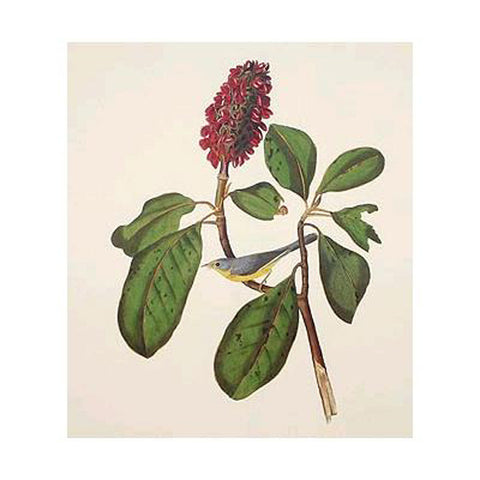Description
Wilsonia canadensis
Flora: magnolia, Magnolia grandiflora
Print size: 26 1/4" x 39 1/4"; image size: 11 1/2" x 20"
Princeton Audubon Limited Edition - produced 1985
While Audubon and Joseph Mason were wandering through a Louisiana cypress swamp on August 13, 1821, Audubon shot and wounded what he believed to be a bird of an unknown species. He first gave it the name "Cypress Swamp Fly Catcher," but later renamed it "Bonaparte's Fly-catcher" in honor of Napoleon's nephew Charles Lucien Bonaparte, a naturalist whom Audubon met in Philadelphia in 1824. Actually, the bird is a young female Canada warbler.
Audubon's young assistant, Joseph Mason, drew the leaves and ripe seed pod of the southern magnolia
Aptly named, the Canada warbler haunts the undergrowth, shady thickets, and dense woodlands of the north. It is a summer resident in similar terrain in much of New England, New York State, and down the Alleghenies. It is readily identified by its necklace of black pendants on a yellow breast. While it gleans among the leaves in the manner of a warbler, it takes much of its food on the wing like a flycatcher.
EHJ
Princeton Audubon prints are direct-camera facsimile lithographs of the Robert Havell Jr. (1793-1878) engravings for The Birds of America (1827-38). Princeton's Double elephant Folio prints are issued in limited editions of 500 or 1500 prints. All are numbered and have a seal in the bottom margin to demonstrate their authenticity.
Printed on heavy Mohawk paper that is recommended by the Library of Congress for archives, the paper is specially toned to match the average paper color of the antique originals.
Item Number:
1703


